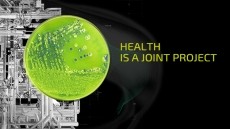Catchpoint puts Datalase to the test
Catchpoint have responded by trialling a backless label, which
renders the backing on labels obsolete, reducing approximately
100,000 tons of waste produced per year attributed to self-adhesive
label production.
One metre of self-adhesive labels produces one metre of waste silicone backing. Catchpoint backless labels match the practicality and versatility of traditional self-adhesive labels while reducing this waste.
The backless labels are stored in rolls, but are prevented from sticking to each other by a unique silicone coating that is incorporated into the lacquer on the non-adhesive side of the label.
They remain non-sticky until the label is peeled from the roll when it can be attached to almost any substrate.
Previously the most common method of marking pills required a mechanical embossing or surface printing method, both of which result in a significant number of rejects due to damaged/cracked product.
Sherwood's DataLase Technology, which was first introduced earlier this year, provides colour change solutions for marking directly on to the backless labels.
Previous studies have identified silicone coating on the backless labels is non-compatible with printing materials such as thermal transfer ribbon.
DataLase technique is an effective and efficient alternative for imaging onto the backless labels.
The technology is able to image more labels, quicker and more efficiently as it does not require the changing of consumables on the production line.
This technique also allows the user to digitally mark variable information with precision that is said to improve upon traditional marking methods, making it possible to patch print rather than flood coat the label.
"Backless labels can contribute significantly to the reduction in environmental wastage in the printing and packaging industry especially when as much as 50 per cent of a regular label ends up as waste," said Rick Leivers, technical manager at Catchpoint.
"By combining them, we forsee a revolutionary step forward in the way in which labels will be utilised in the future," he added.
With a UK Patent already granted, a DataLase 'edible composition' has been developed for the use in pharmaceutical tablet or confectionery coatings.
Laser imaging post coating allows information such as dosage level to be transcribed.
Non-contact printing methods such as inkjet are largely unsuitable for tablets, due to the spread of the ink droplets and slow drying of the ink.
There are also a wide range of associated problems, such as maintenance and production line down-time, in addition to issues associated with maintaining printing apparatus and replacing consumables.
When dealing with sensitive products such as pharmaceuticals, these problems are particularly undesirable.








